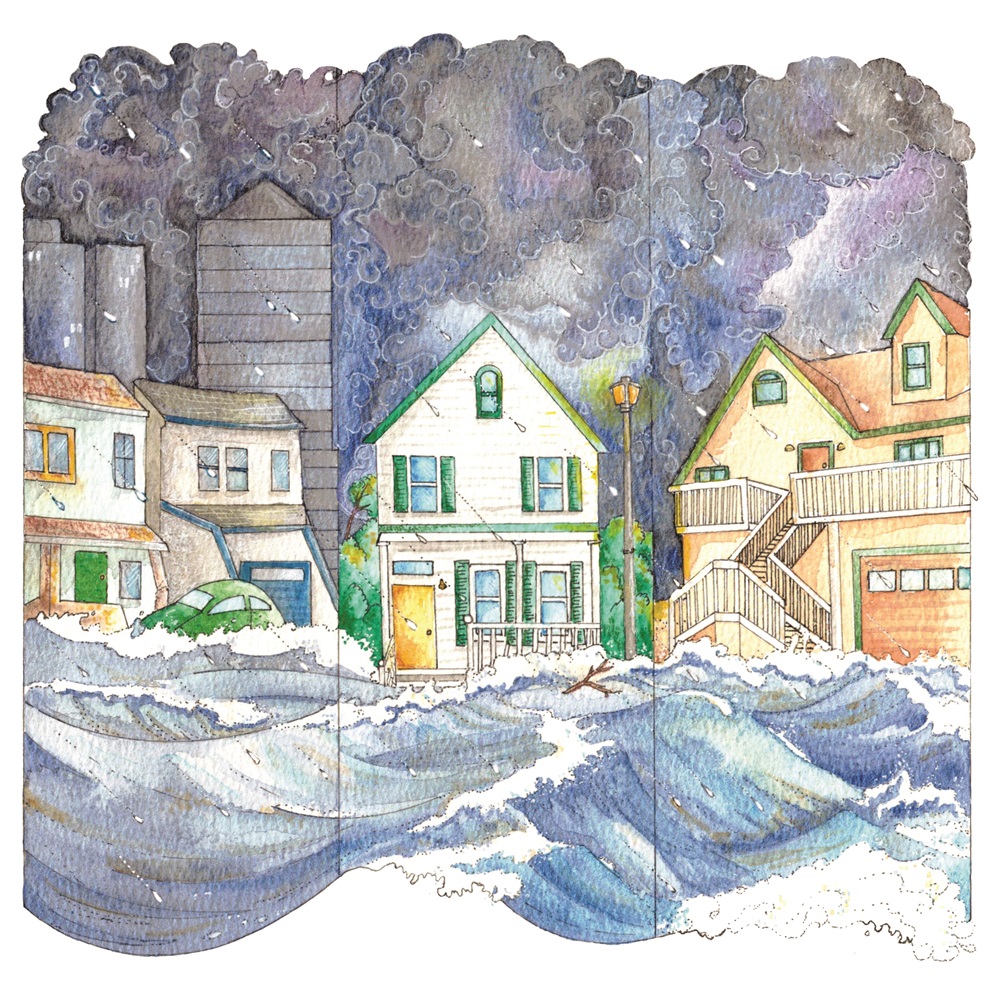Flooding is already a problem in Delaware, the lowest-lying state, and it is expected to worsen over time due to the impacts of climate change, chiefly sea level rise and more frequent and intense storms.
That’s why the Delaware Department of Natural Resources and Environmental Control launched a new flood planning tool. Known as I-ADAPT, or the Individual Adaptation and Decision Planning Tool, it allows Delawareans to receive personalized recommendations to reduce the impacts of flooding on their property.
It’s intended to be used by homeowners, renters and businessowners.

“When users open the tool, they will be prompted to identify their structure and go through questions aimed at understanding the physical characteristics of the property, for instance, is there a yard on the premises, and the user’s own personal preferences, like whether they have flood insurance and how much they are willing to invest in flood adaptation strategies,” said Jordana Cutajar, a resilience planner with the DNREC Division of Climate, Coastal and Energy. “The tool uses logic to determine which questions are suitable based on the information given and provides personalized adaptation strategies that can be implemented right now and in the future to reduce the property’s flood risk through 2050.”
It is distinct from the Delaware Flood Planning Tool, which informs users whether their property is at risk from flooding, including if it is within the Federal Emergency Management Agency’s 100-year floodplain.
While I-ADAPT does utilize features of the Delaware Flood Planning Tool to identify flood zones and base flood elevations, its focus is on helping users take action and prepare for flooding on their own property. I-ADAPT offers information on flood adaptation and mitigation, including both immediate and long-term strategies for minimizing risk. It contains details about cost, permitting and who to contact for each adaptation strategy.
In all, there are more than 90 strategies, falling under the categories of interior adaptations, exterior adaptations, shoreline adaptations, yard adaptations and other adaptations.
Answering questions for I-ADAPT might prompt the website to suggest you develop an evacuation plan, sign up to receive alerts from the Delaware Emergency Notification System and learn about your community’s emergency strategy, for instance.
Upon completing the questionnaire, users will receive links to their personalized adaptation strategies, or they can opt to have them sent via email. Users can rest assured that none of their personal information is saved or utilized for any other purposes.
Developed over the course of several years, I-ADAPT is intended to be “all-encompassing,” Cutajar said, covering suggestions both short- and long-term as well as ones that vary in cost and complexity. The wealth of measures contained in the tool help personalize the results, enabling it to offer a wide variety of options to minimize flood risk.

According to FEMA, one inch of flooding can cause $25,000 of damage. Many people do not think about the risk excess water poses until it’s too late, making it critical to start planning now rather than waiting until a storm is on the horizon.
Recommendations include both wet and dry floodproofing. The former refers to measures used to prevent damage from flooding while allowing floodwaters to enter an area, while dry floodproofing consists of steps that make a structure watertight.
A number of recommendations center on elevating items such as appliances, utility equipment and personal belongings. Raising refrigerators, wiring and valuables above the base flood elevation line (defined as the elevation of surface water from a flood that has a 1% chance of equaling that water level in any given year) by moving them out of a basement or onto shelves or other platforms can be done fairly quickly and cheaply but can save thousands of dollars, if not more.
Other interior adaptations include using water-resistant materials such as sealant and preservative treated lumber, closing a crawlspace and elevating a building or converting the lowest floor to a garage or storage space rather than living space.
Among the exterior adaptations are installing breakaway walls below elevated buildings, utilizing waterproof doors and windows, raising fuel tanks and sheds and retrofitting septic systems. Additionally, cleaning gutters can prevent them from becoming clogged, which can lead to rain overflowing from the gutters and pouring into nearby buildings.
Other recommendations include building French drains to route water away from foundations and to natural drainage sites, creating rain gardens with native plants, setting up cisterns (water storage tanks that can be above- or belowground) and using permeable pavement to enable rain to flow through the pavement to the gravel and soil beneath it, just to name a few.
For homes required to purchase flood insurance, some steps, such as filling in the basement with dirt or sand, may reduce premiums.
While certain properties are more at risk for flooding than others, everyone can benefit from strategies contained in I-ADAPT. For more information, check out the tool itself and the list of additional resources.
Related Topics: adaptation strategies, climate coastal energy, flood, flooding, outdoor delaware, science, storm water